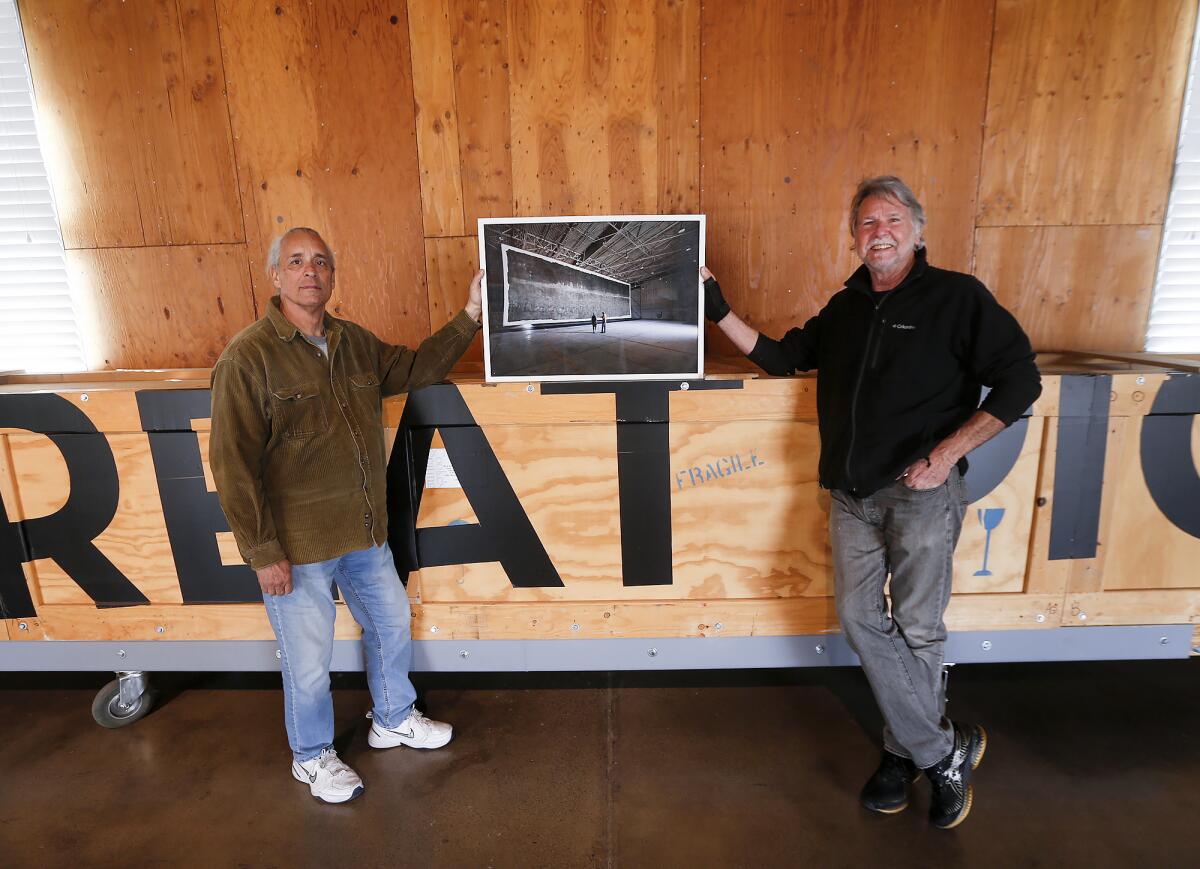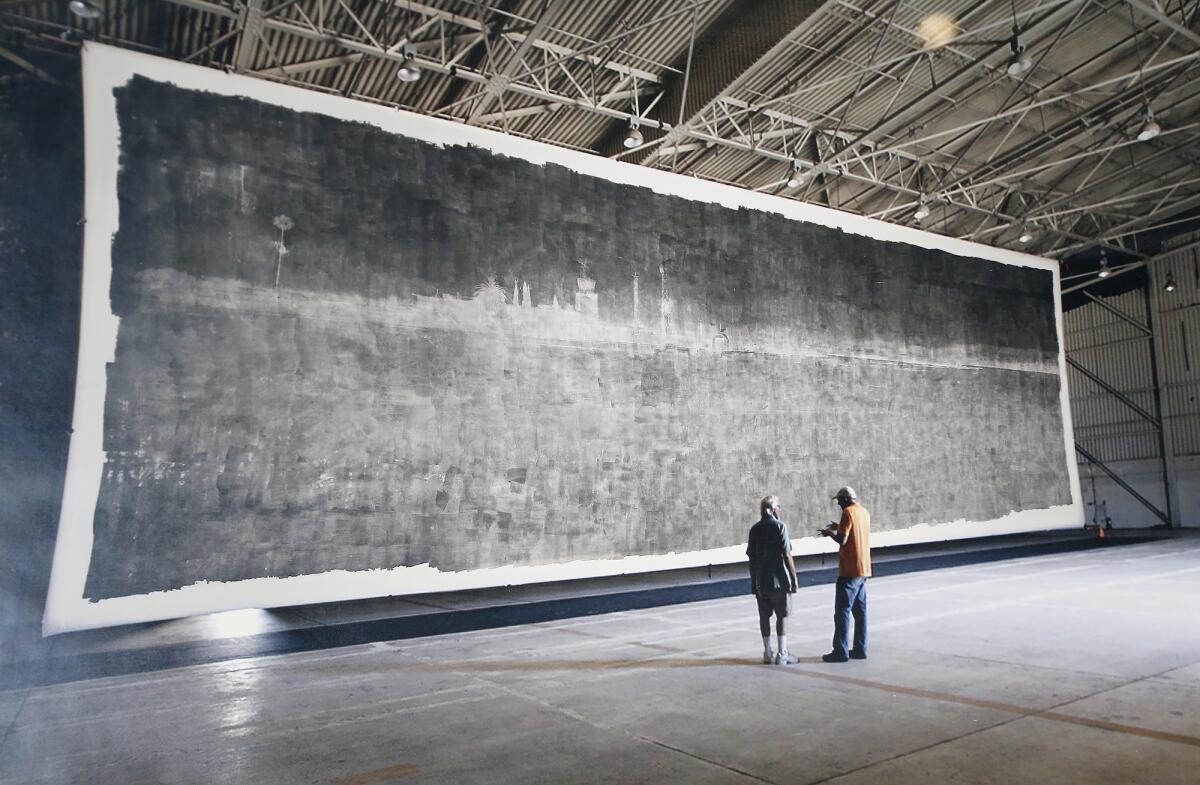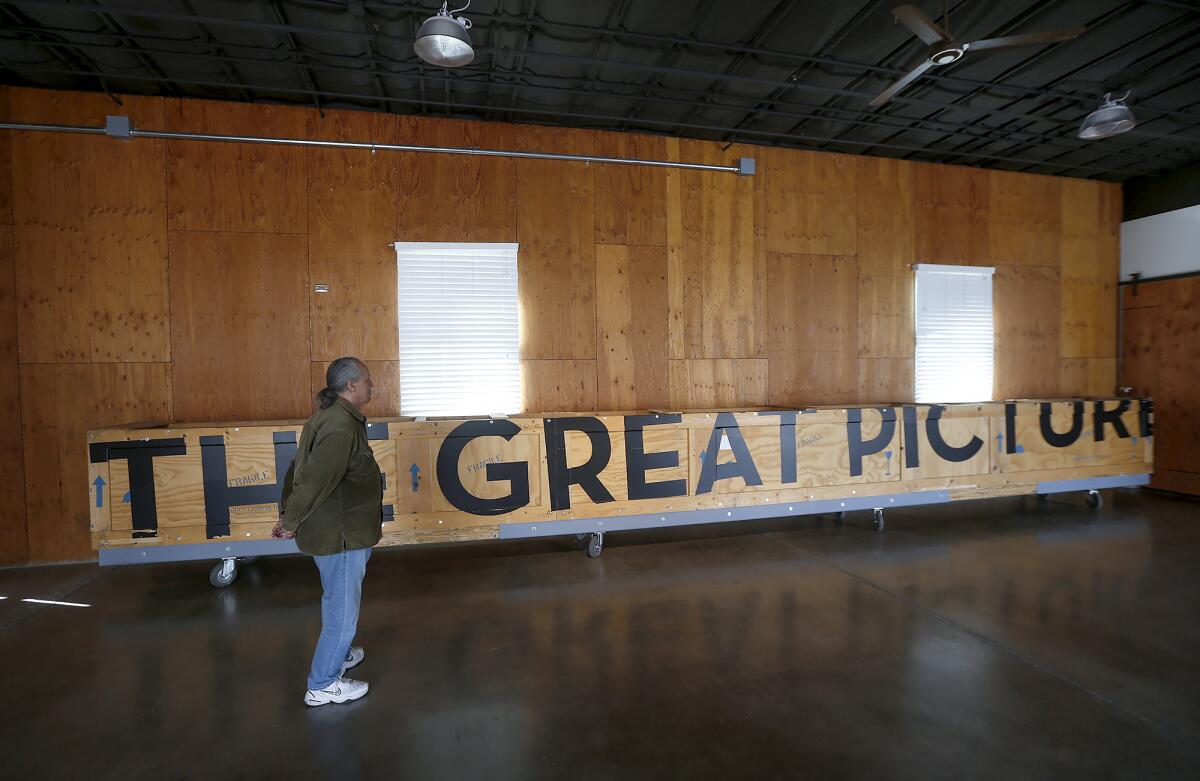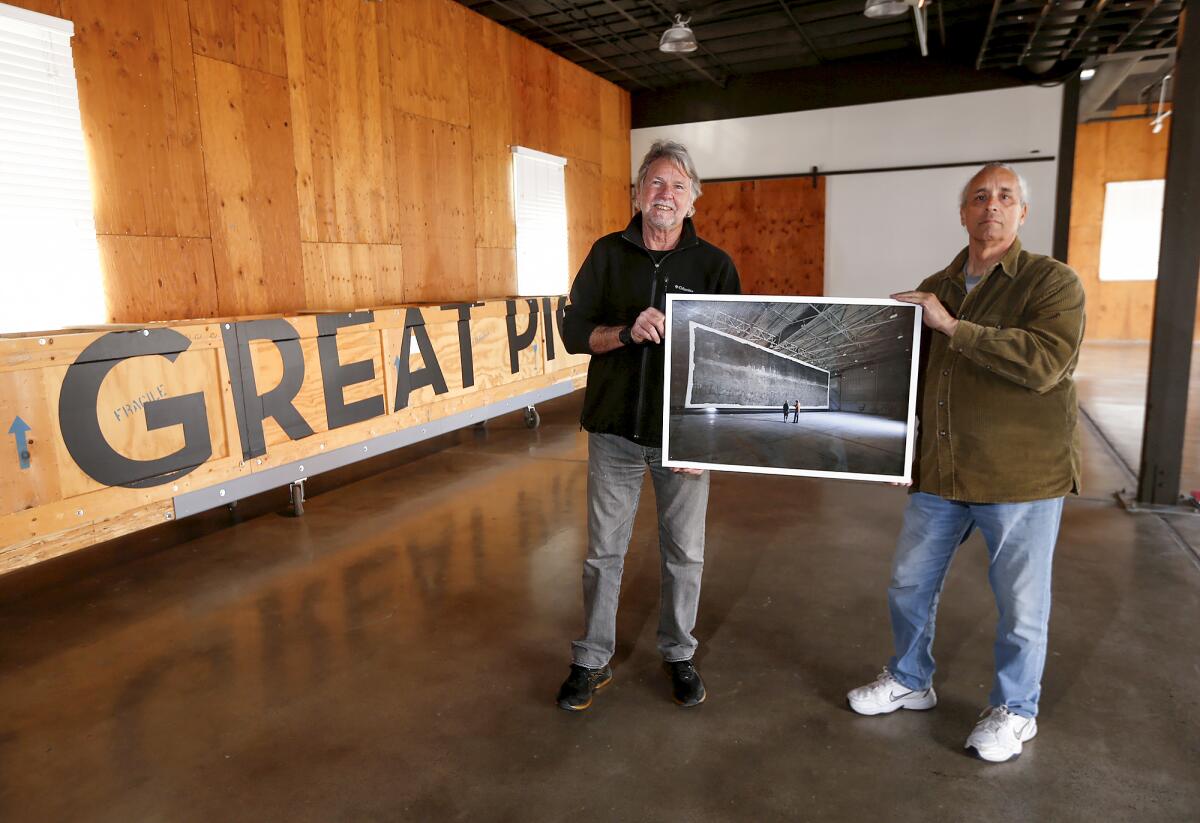As ‘The Great Picture’ returns home, its creators look back on the monumental project

- Share via
After the decommissioning of Marine Corps Air Station El Toro in 1999, a group of six artists and photographers came together to form a collaboration they would call the Legacy Project.
Jerry Burchfield, Mark Chamberlain, Jacques Garnier, Rob Johnson, Douglas McCulloh and Clayton Spada set out to document as much as they could of the sprawling 4,800-acre military base to help preserve its history and its importance to the community.
The group captured the Marine base in extensive photo sessions over the course of 15 years, producing one particular marvel: a monumental project known as “The Great Picture,” a 31-by-111-foot shot overlooking the base’s control tower and twin runways.
The massive photo is featured at a new exhibit at Great Park in Irvine. The exhibit, “The Great Picture: Making the World’s Largest Photograph,” will be open to the public through May 7 at Palm Court Arts Complex.
The photograph has been shown at exhibits around the world, including the Smithsonian Institution’s National Air and Space Museum in Washington and the Central Academy of Fine Arts in Beijing.
The Legacy Project started out as a modest plan that would eventually take years to complete as the ambitions of its originators grew. Four of the project members taught in the photo department at Cypress College, including the late Burchfield, who lobbied to give students access to the base and document it as it went through a transition.

“Very quickly, it became apparent to us that this shouldn’t be a one-off thing,” Spada, who along with Chamberlain and Johnson had joined Burchfield in the initial exercise of taking students onto the base, said. “There was a significance to this base. It was so much a part of Orange County history that we felt that we had to document this thing.
“We wanted to do a long-term, basically open-ended project to document this space as it was then, and as it would change to whatever it became — whether it was Great Park or another airport or whatever.”
The Great Park and housing developments now dominate the site, largely unrecognizable from what it once was.
Several photographic projects came into being during this work. At one point, the six-member group shot a picture in each of the cardinal directions every 60 feet they walked together. They also took pictures of the approximately 1,800 buildings on the base.

“The Great Picture” was just one project in the larger collaboration, but it was an undertaking like no other that required the help of many.
“We pulled it off through the help of probably 400 volunteers, at one time or another, who came to help,” Garnier, president of the Legacy Project, said. “To me, that was one of the really exciting things about this project was the collaboration. People would find out about this project, and they’d get really enthused by it and wanted to be part of something that was larger than all of us.”
Taken on July 6, 2006, the photo was shot from a jet hangar that was converted into a camera obscura. Spada had been working with camera obscura images in China when he brought the idea to the others over some drinks.
“There was a row of former jet hangars, helicopter squadron hangars that were facing the control towers that would have just made beautiful camera obscuras, so we picked one and went from there,” Spada said. “After that, for the year from the time of inception to the time we actually did it, we were fundraisers, we were politicians, we were construction workers, anything but artists.
“It was fortunate that we had beer because if we had any inkling of what we would have gotten ourselves into, we would have easily talked our way out of it, just the logistics of this. I’d do it again in a heartbeat. It’s one of the most insane things we’ve ever done.”

To create the image, the hangar had to be made dark. Using a 400-pound piece of muslin, it became the world’s largest pinhole camera. A 6-millimeter pinhole was placed in the doors of the hangar, and it was exposed for 35 minutes, before the image was processed within the building.
“The Great Picture” plays a part in the memory of the base, as well as a transition period in photography.
“The piece that we created was almost right at that perfect transition point as photography migrated from analog to digital,” Garnier said. “We created something in an analog manner. Within 24 hours, digital reproductions of what we had created were floating around the internet, in newspapers, all around the world. It’s kind of interesting how something made analog became digital almost instantaneously.”
More to Read
Sign up for Essential California
The most important California stories and recommendations in your inbox every morning.
You may occasionally receive promotional content from the Los Angeles Times.














